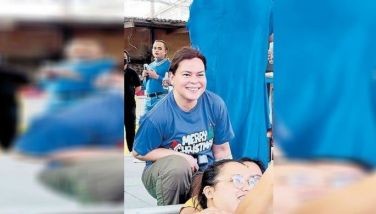Bedazzled
An episode of "Probe" piqued my curiosity about the "Gold of Ancestors" exhibit at the
The man spoke of discovering a vast array of gold objects, which he sold to various dealers with the help of a priest who was his friend. His story took on more dramatic twists as the tale of his newfound wealth led his relatives, neighbors, and armed men to ask for their share of his treasure and the proceeds thereof. His daughter said that their family had to change names and move to another province.
At the end of the show, he was brought to the
The exhibit is part of a larger exhibit called "Crossroads of Civilization" which the museum handout describes as "a tripartite exhibition celebrating the cultural crossroads that are the
On the fourth floor of the sleek and modern
I wondered if pre-colonial inhabitants of the
The "Gold of Ancestors" exhibit opens with drama. The entrance resembles the door to a bank vault, similar to the bars of a jail cell. Visitors are made to sit in a darkened room and watch an introductory video, which includes information about how the Philippine islands were formed. Some gold pieces are found on the floor, covered by a hard and clear material. These are spotlighted during the video. I felt as if I was in a
The star of the show is the long belt of pure gold that the text described as being similar to the sacred thread worn by Hindu Brahmin. All my skepticism about ancient barters involving gold necklaces touching the floor disappeared when I saw it.
I saw gold bowls, a gold laddle handle, earrings, rings, cuffs, bangles, belts, buckles, funeral masks, and other golden things. The workmanship was exquisite. From the text, I learned that in pre-colonial times, even children could tell the grade of gold.
The last part of the exhibit felt anti-climactic after all the dazzle. Entitled, "Embroidered Multiples," it showcases 18th to 19th century Philippine clothes. The exhibit features selections from the Leiden National Museum of Ethnology's collection of Philippine garments acquired from a French diplomat who lived in
While the rainy and gloomy weather that Sunday afternoon was more suitable for curling up in bed, I'm glad I decided to visit the
* * *
Email: [email protected]
- Latest
- Trending




























